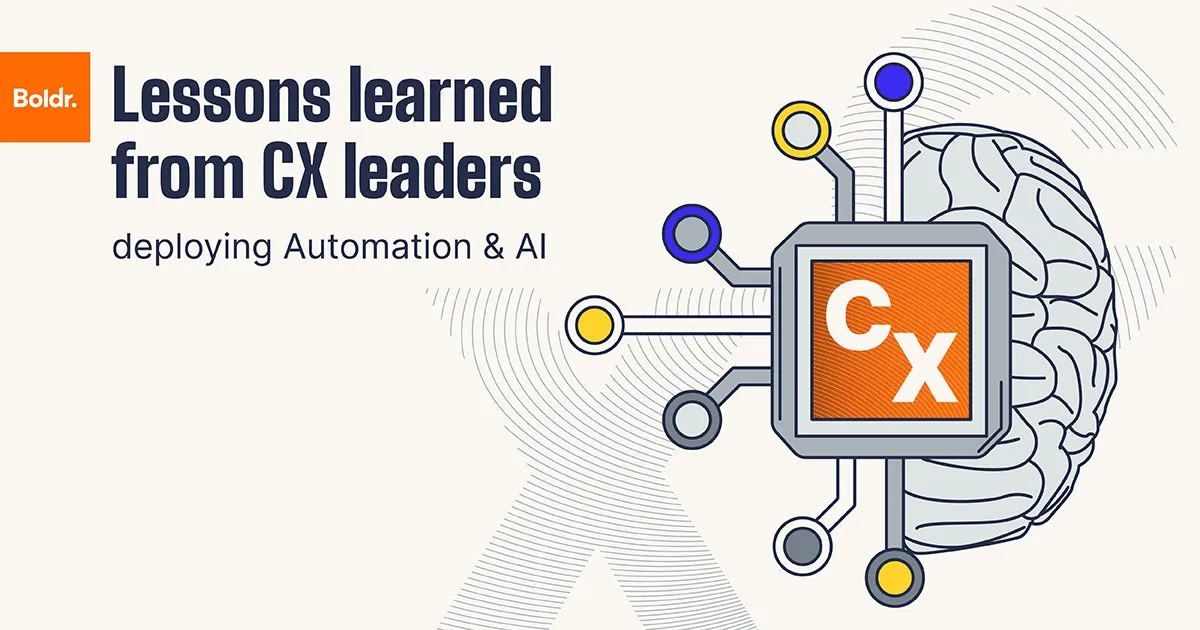"Ideal outsourcing gives you the edge you didn’t even know you were missing".
The customer experience landscape is evolving drastically, driven primarily by changes in tech: Personalized recommendations from our apps, generative artificial intelligence assistants, smart device interactivity and other advances are in play. To meet corresponding customer experience expectations, services we deliver as part of the customer journey must also evolve.
In the early 2000s, a similar set of events happened in the IT world: The cloud was evolving; server farms with redundancy and backups were hard to maintain and were expensive to staff. We saw an unprecedented movement toward outsourcing of these technologies and services.
Today, customers are making extra demands; they want to work with companies who:
- constantly improve services
- provide personalized experiences quickly, with low friction.
- treat employees fairly and ethically
- create fair policies balancing business and real-life
- are empathetic, especially when things go wrong
- offer innovative support and self service while maintaining a human touch
Navigating the tools, the processes, and the skill sets to meet these new expectations can be complex. Expert advice and guidance from CX experts will become even more important. BPOs are in a unique position to solve these problems and evolve customer-facing services to meet changing markets and standards.
Will challenges be your opportunities?
Nearly 80% of customers prioritize service quality as much as products themselves, making customer experience vital. In keeping, it is increasingly harder to provide service quality that meets customer expectations. Customer service organizations need to focus on three specific areas: Customer expectations and voice, Navigating CX tools, and the Human Element.
.png?width=639&height=639&name=Quotation%20Post_Dusk%20(2).png)
Customer Expectations and Customer Voice
One major challenge: Gaining a comprehensive understanding of customer needs and expectations, and driving business change that aligns with that feedback. Adopting a customer-centric approach requires viewing interactions from the customer perspective. Voice of Customer (VoC) programs are not new, but with more advanced tooling, especially in the AI space, there are now more options and capabilities. Listening to feedback is paramount, particularly in the social media era, in which mistakes or bad experiences can be amplified immediately.
Because customer attention spans have decreased and expectations are higher, actioning customer feedback is vital to maintain repeat customers. Translating customer insights into actionable strategies can be daunting, with the multitude of platforms and data sources. Having the tool expertise and the ability to find and action helpful insights fast remains a challenge.
Navigating the CX Tool Market
AI CX technologies help provide timely responses, resolving issues effectively, and offering personalized experiences based on customer behavior and preferences. These tools have come a long way in terms of capabilities and accuracy and the number of these tools has increased drastically. How do you know which tool will solve your needs? When should you implement a tool? And what skill sets are required for implementation?
Between the power of these tools and the hype cycle, it's no wonder that 56% of CX leaders are exploring options and 70% plan to adopt within the next two years (Zendesk). To stay aligned, you need the right service partners who will support use cases and grow with you as tech evolves. Effective decisions require precise definitions: customer-facing self service, agent context, workflow automation to improve handle times, proactive support, better insights and VoC capture, and many other use cases all might be solved differently. Focus and knowledge is key.
With AI tools, it is paramount that vendor models are set up:
- For your industry
- With guardrails to avoid hallucinations
- To present your brand with the right tone and persona
- To adapt as products and services evolve
- To integrate into existing tool sets
Once you choose a tool that is right for use cases and business, you also need someone to design AI experiences for customers. Proper conversational design can maintain or even improve customer satisfaction. Picking the right tool set and the cost and difficulty of hiring the right skill set to implement and maintain is a significant challenge.
The Human Element
More and more, prospective customers are considering the values of your business before making a decision about partnering with you. Customer Experience is primarily about the human elements of your organization. From the way you treat your employees, to the brand, quality, and tone of your customer interactions, your company needs to consider the demographics of whom you employ, how you care for them, and the communities where they live.
The challenge arises when business needs conflict with delivering the services you want and expectations your customers have. For example, many support organizations focus on average handle time (AHT) and want to minimize it for high productivity. When customer emotions run high or issues are complex, trying to reduce handle time can be seen as a lack of empathy or attention to detail. This balance is hard to navigate and scale.
BPOs best placed to solve problem
Outsourcing organizations are well-positioned to help solve these conflicts in cost-effective, scalable, and customer experience-focused ways. Why? Because they are in the business of customer experience. BPO expertise across multiple verticals and brands gives them unique insights into how all companies can improve. Customer service BPOs serve as an extension of business operations, directly influencing customer loyalty and brand perception. By providing consistent and expert service, BPOs ensure customers feel valued and understood, which is crucial in fostering long-term relationships.
The best BPOs assist organizations in making data-driven decisions by implementing robust monitoring and reporting mechanisms. This access to real-time insights of operational performance helps businesses quickly identify areas for improvement, optimizing processes accordingly. These companies know how to run and action Voice of Customer programs that improve products and services. Partner with a BPO who can solve this challenge and use them as a trusted advisor to deliver stellar CX.
It's also in a BPO’s best interest to not only understand the technology market, but to work with and partner with the tools that are best-in-class at delivering efficient, high-quality services for your specific use case. Going to the market for a new tool can be daunting. Implementing and maintaining it might require special skill sets, and then validating it could take weeks of trials and testing. Your BPOs should help you with these decisions, refer you to trusted tech partners, and provide implementation best practices with realistic goals. By doing so, they can offload work from your team, while you gain all the advantages of top-performing tech.

Outsourcing organizations are human experts. Not just in hiring, but in cultural differences, language demands and more. Working with a BPO should not be exploitative. Today's consumers recognize the balance between cost savings and unfair labor practices. Find a partner that balances quality and cost, providing the services you need, scaling with your business, and reflecting the values of your organization to customers. As consumers increasingly demand transparency and ethical practices from the brands they choose, identifying a BPO partner with ethical outsourcing practices is becoming a core requirement.
About the author: Craig has over 25 years of customer-facing experience collaborating with companies in 30+ countries and has developed a deep understanding of customers' expectations for their vendors. He is an advisor to multiple CX software companies, coaches CX leaders on best practices, and a prolific content creator in the CX space. Currently he is the VP of Partner and Customer Success at Kodif.

.jpg?width=166&height=166&name=Craig_Square_small%20(2023-05-09%2013_35_00%20ver).jpg)

